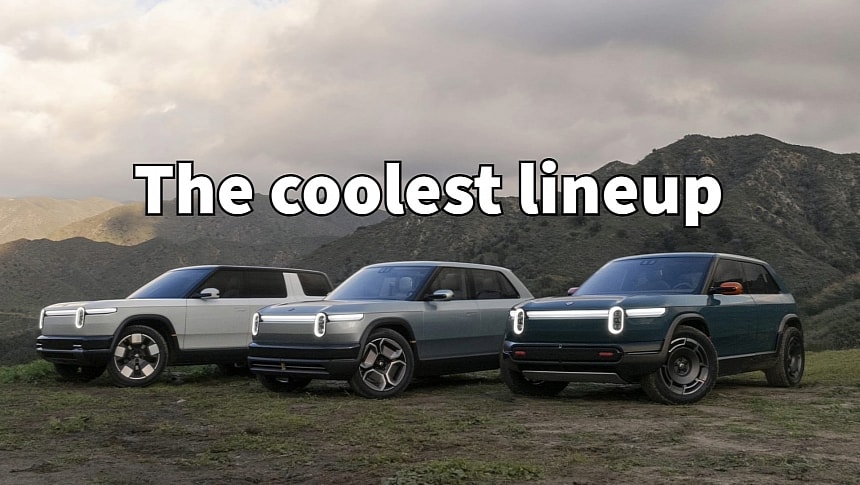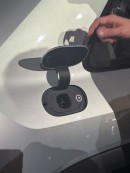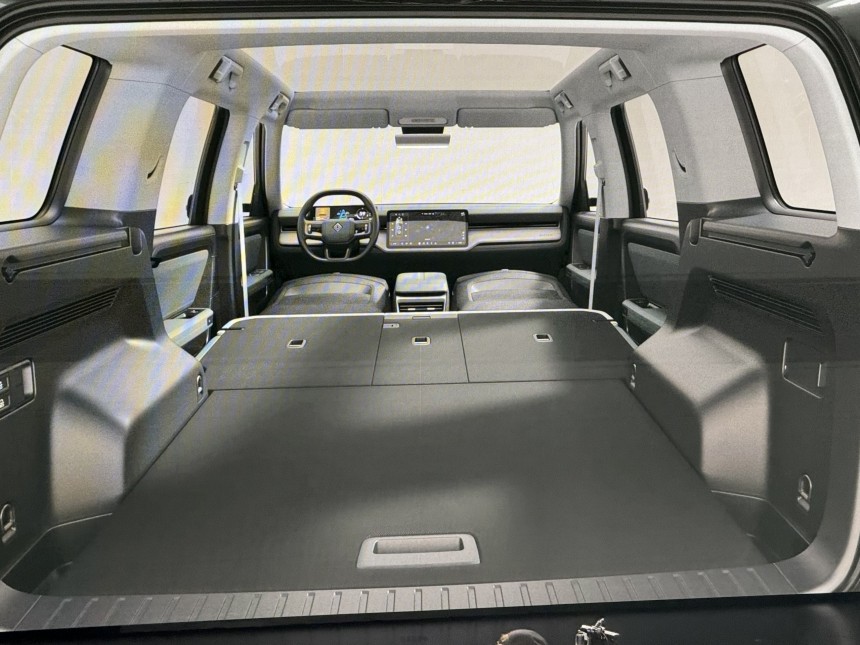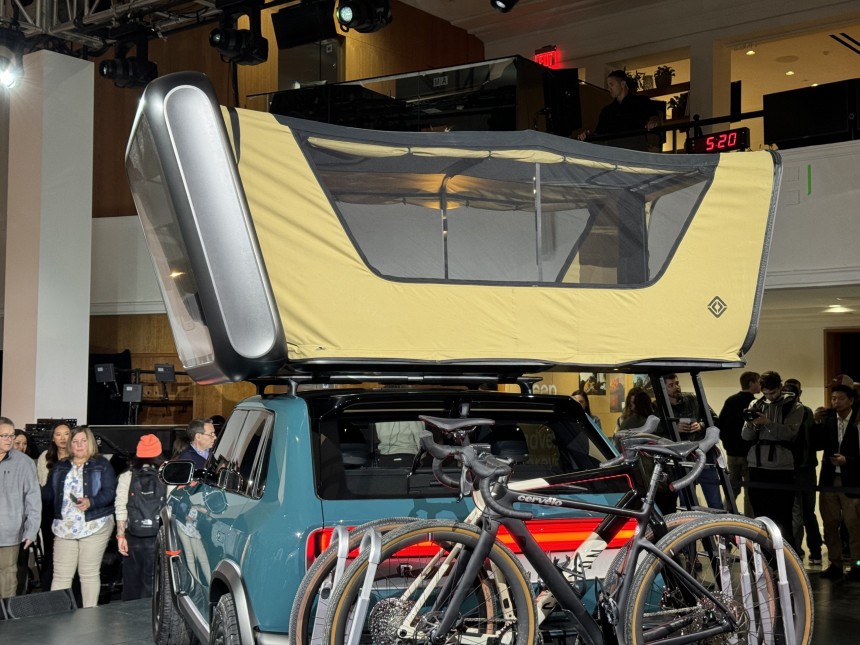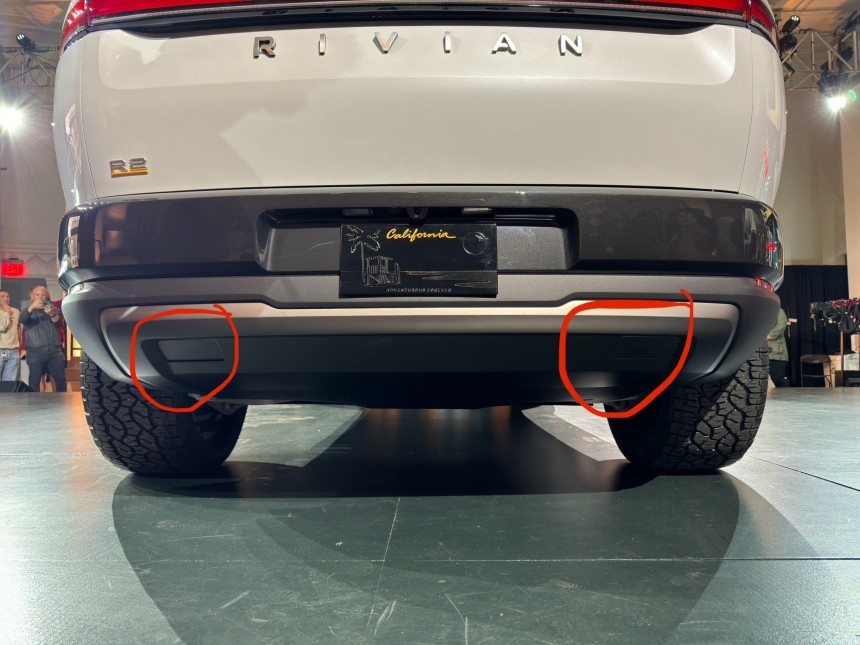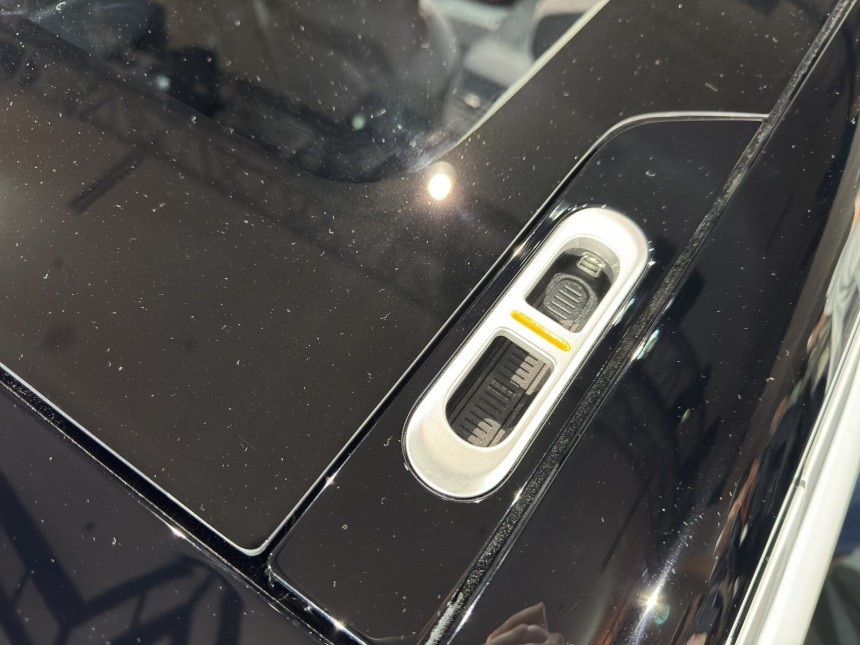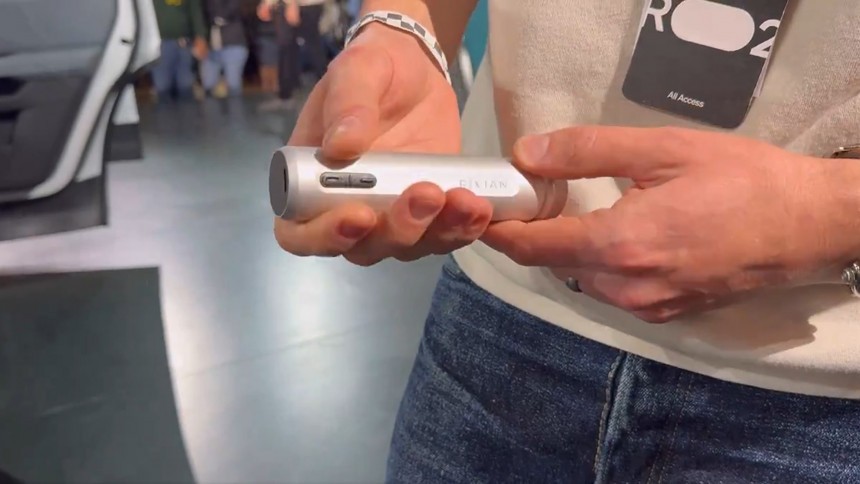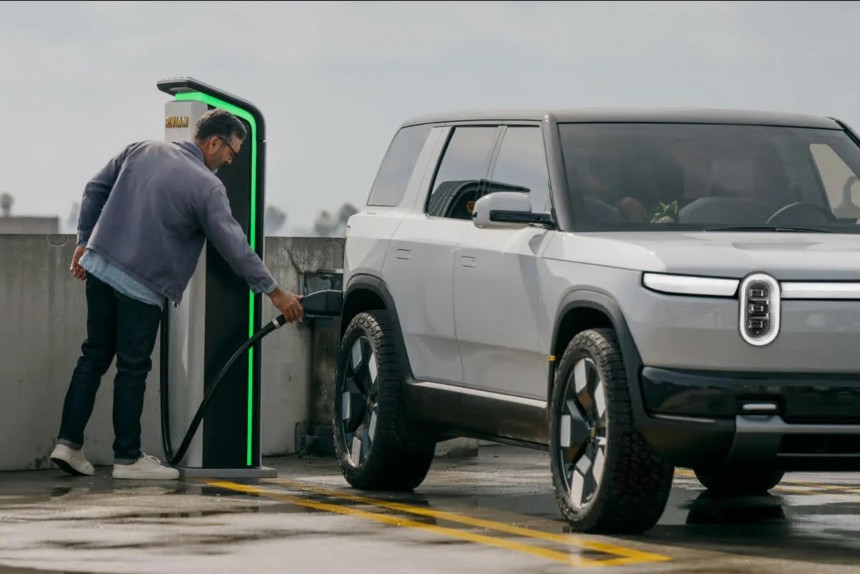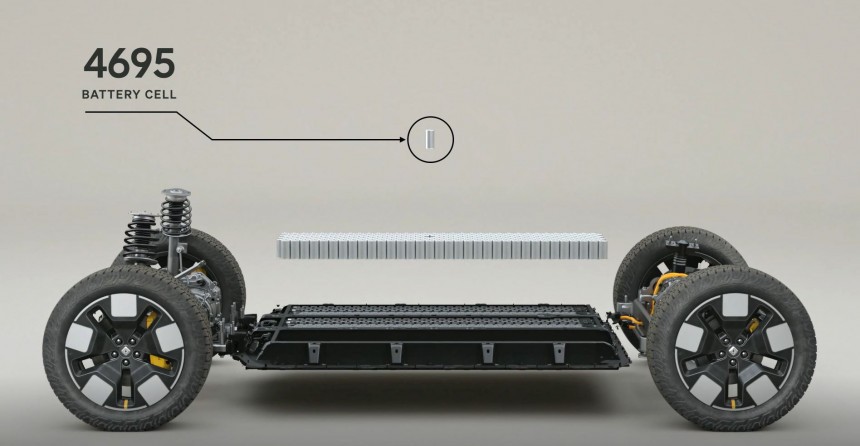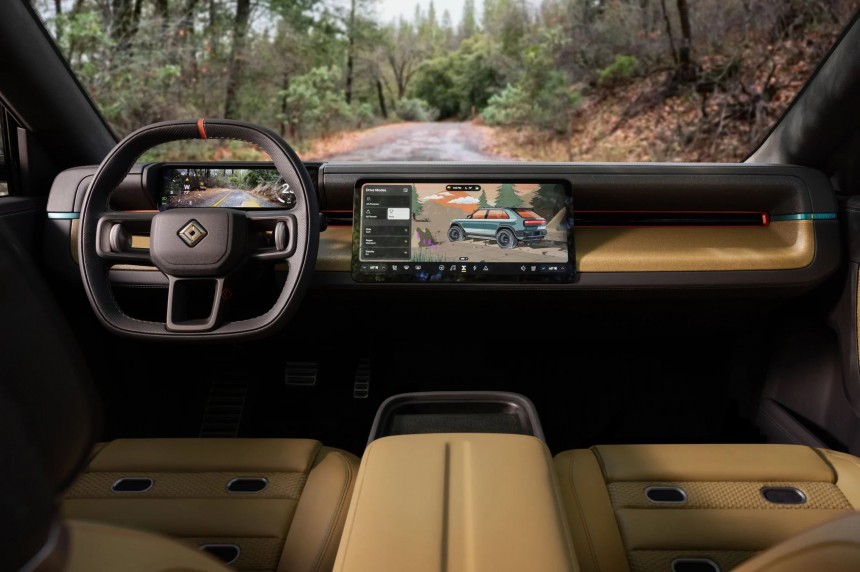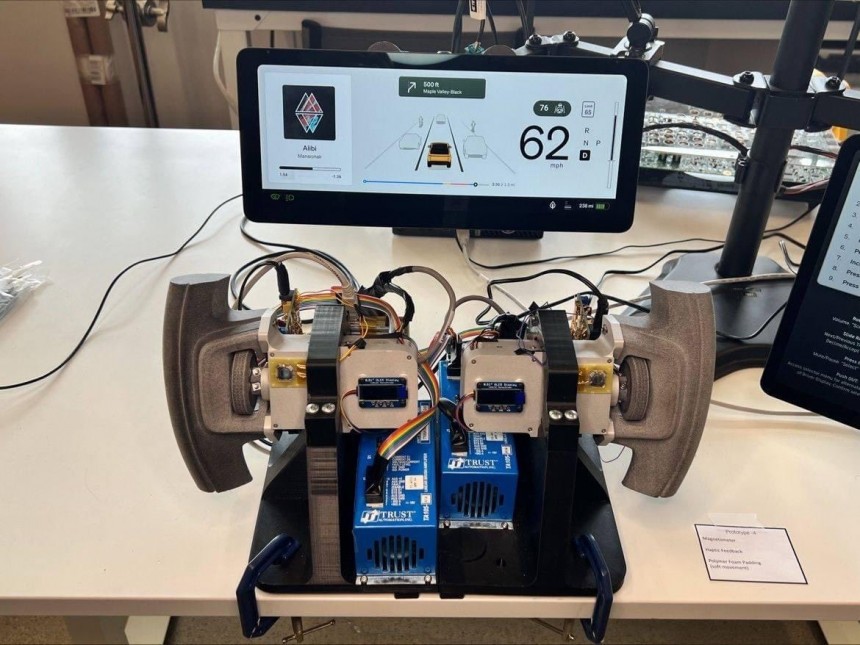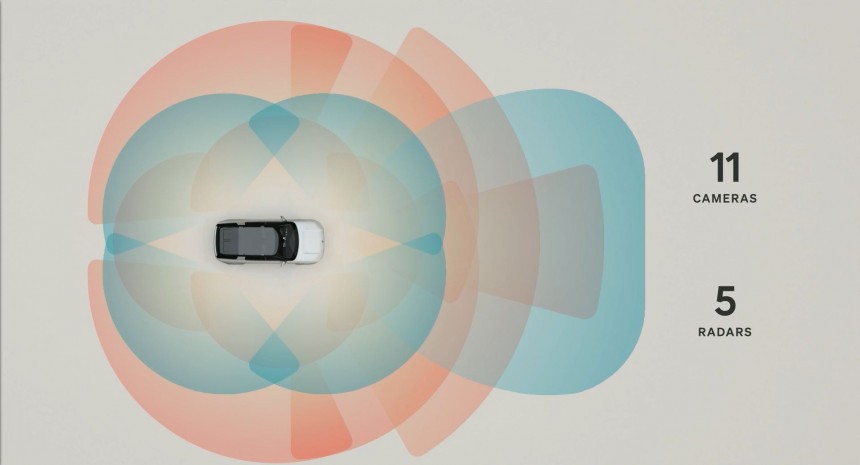Rivian continues its EV adventure with a new lineup of compact crossovers set to arrive in 2026. The Rivian R2 is arguably one of the most practical SUVs, with many features that are unique in its segment. Here are ten of the coolest Rivian R2 features that few people know about.
If we take Rivian executives' words at face value, the designers took seven years to develop the R2 and its brothers, R3 and R3X. However, if we look at the R2, we see the same cartoonish face and boxy silhouette we know from the R1 models. Whoever worked on this design didn't put much effort into distinguishing it from the bigger brother R1S. They must've hoped the size difference would do the trick, just as it does for many carmakers' models.
However, what Rivian spared in the eye candy department was spent on practical features. After all, the EV startup had a reputation to maintain, considering the exciting features the R1T and R1S have. Rivian markets its EVs as adventure vehicles and spared no effort in preparing them for this mission. This is why it offers a wide range of accessories designed around the ideas of off-road adventures and off-grid camping. The R1T and R1S are flush with cool features, and the R2/R3/R3X take this mindset to the next level.
Perhaps the coolest thing Rivian offered to the R1T was the Gear Tunnel, which was able to accommodate a camp kitchen with every item you might think of. Even though Rivian failed to deliver on this promise, it set the foundation for many cool features that third-party accessory makers designed for the R1T. Even though the R2 EVs don't have a Gear Tunnel, Rivian hasn't abandoned the idea of offering cool accessories and features. Here are ten of the best and least-known features of the Rivian R2.
Here, not only the rear seats fold flat but also those in front, including the driver's seat. This vastly expands the space to stretch your legs. Because the roof is almost horizontal, the Rivian R2 is less claustrophobic than other modern SUVs. Like any electric vehicle, the Rivian R2 is ideal for camping in the cabin, offering a controlled climate without running a noisy and dirty gas engine.
The Rivian R2 has a roomy front trunk, so you can use the entire cargo space as a living quarter. Thanks to the glass roof, rear window that fully drops into the tailgate, and pop-out rearmost quarter windows, you can create a unique open-air experience at the campsite. As Rivian CEO RJ Scaringe said during the R2 unveiling, all you need is an inflatable mattress, and you're all set. Did I mention that the Rivian R2 comes with two glove boxes? Well, it does.
The neat thing about the Rivian Treehouse is that it's a powered tent, and the lights and temperature can be controlled from the infotainment screen. You can choose from a few predefined settings at the touch of the button, like "Super Dark" or "Sleep Tight," and a mysterious "Camp Vibes" feature that Rivian has yet to explain.
Rivian also promises a Travel Kitchen, which has everything stored in a box that integrates with the Rivian Accessory Port at the back of the R2. The kitchen includes a water tank, a cooler, an induction cooktop, and a cookware set. Hopefully, it will have a better fate than the previous Camp Kitchen that Rivian offered for the R1T.
It takes the idea of using the two-hitch support for accessories and pushes it to the next level by providing enhanced functionality. This is why Rivian offers a sturdier bike mount design specifically for the Accessory Port instead of one for the tow hitch support. In the case of the Bike Mount, the neat trick is that it can be stowed away in the frunk when not in use.
The presentation photos show the Accessory Port accommodating the Travel Kitchen. Like the Bike Mount, the kitchen slides on the side rails and locks in place. Rivian also offers a multipurpose cargo box with handles and wheels that can be used as additional storage space.
The connectors in the roof rails can be used to power the roof tent. Since you can control the climatization and lights in the tent, I figure it might also have a data bus besides the electrical connection. This offers a lot of flexibility about what can be powered by these connectors, depending on what voltage and power are available.
The most obvious use would be a roof light, which is very useful when camping or off-roading at night. You can also use the same connector to power an electric blanket for the Treehouse tent. I'm sure Rivian and third-party suppliers will get creative with a range of powered accessories that can use this feature.
With the R2, Rivian offers a similar dock in the front passenger door. Instead of a flashlight, the second bay hides a power bank with a USB-C port and an intriguing feature: Besides charging your phone, the power bank doubles as a hand warmer. This is a nice accessory to have in your pocket on a cold winter day.
R1 owners would want to have the power bank instead of the flashlight. People who attended the R2 launch confirmed that the power bank would fit the flashlight dock. However, Rivian does not sell it, so finding one is impossible until the R2 starts shipping. And even then, it's not guaranteed, as Rivian might ditch it to simplify R2 production and optimize costs.
Thankfully, Rivian did integrate the NACS port, making it awkward to advertise charging via an adapter at its own RAN station. While people were thrilled to see the NACS port arriving, the position Rivian chose was disappointing. Rivian placed the port in the rear right corner, which was arguably the worst choice. Not only does this ensure blocking two spots at Supercharger stations, but it also forces the driver to go around the car every time they charge it.
Rivian engineered explained that the rear position was chosen to optimize costs, while the right-side placement ensures seamless curb charging. Thankfully, Tesla announced a NACS to NACS extension cable, which will be available for purchase soon. It also promised to accelerate Supercharger V4 deployment, with the benefit of having longer cables. Tesla still encourages all vehicle manufacturers to standardize charge port locations to the rear driver side or front passenger side.
Although Rivian did not offer details about the battery capacity, CEO RJ Scaringe confirmed our speculations that there will be at least two battery variants. The smaller pack could have around 80 kWh for an estimated range of about 270 miles. The bigger pack would be about 100 kWh and capable of over 300 miles of range, as Rivian advertised.
Although the battery pack in the R1 vehicle also had a structural role, Rivian took this to the next level with the R2 and R3. The pack will contribute more to the car's structure, and, for the first time, the vehicle's seats will bolt to it. This follows Tesla's approach, which probably means the R2 will also use megacastings in its front and rear structures.
In one of the R3X pictures, the instrument panel shows a full-screen rear camera view, with a compass and other info superimposed. The R2 also comes with a secret menu where you can access hidden functions, including a user-interface simulator to explore various car functions.
It's unclear whether this function will be offered on customer vehicles or is reserved for the pre-production prototypes. All other changes are expected to land on existing vehicles, including R1T and R1S, with an upcoming software update. There's no word about Android Auto or Apple CarPlay support, although this would make a lot of people happy.
The rollers can adjust the sound volume or navigate the user interface's menus. Famous YouTuber Marques Brownlee praised the "Hallo Rollers" for offering precise control and well-thought-out feedback. For instance, when you turn the volume up, they will simulate a series of small clicks, and they become harder to turn the higher the sound volume. When controlling a menu with fewer choices, the rollers will provide a "much larger click" for each menu item.
I'm sure Rivian will design new use-case scenarios for the Halo Rollers in the next two years until the R2 enters production. However, people would want to know whether the system will be offered on the R1S and R1T with the upcoming refresh.
Rivian wants to achieve unsupervised highway driving. This is Level 3+ autonomy, where you don't drive the car (hands off the wheel, eyes off the road). You won't need to monitor the driving, although specific conditions must be met for the system to work. Rivian still has two years to figure out "self-driving" before offering the feature in the R2 vehicles.
However, what Rivian spared in the eye candy department was spent on practical features. After all, the EV startup had a reputation to maintain, considering the exciting features the R1T and R1S have. Rivian markets its EVs as adventure vehicles and spared no effort in preparing them for this mission. This is why it offers a wide range of accessories designed around the ideas of off-road adventures and off-grid camping. The R1T and R1S are flush with cool features, and the R2/R3/R3X take this mindset to the next level.
Perhaps the coolest thing Rivian offered to the R1T was the Gear Tunnel, which was able to accommodate a camp kitchen with every item you might think of. Even though Rivian failed to deliver on this promise, it set the foundation for many cool features that third-party accessory makers designed for the R1T. Even though the R2 EVs don't have a Gear Tunnel, Rivian hasn't abandoned the idea of offering cool accessories and features. Here are ten of the best and least-known features of the Rivian R2.
1. Practical interior, exciting seat concept
Although Rivian promotes the R2 as a mid-size SUV, it's actually smaller than the Tesla Model Y. However, the R2 is bigger on the inside, thanks to its boxy shape. An almost vertical tailgate might hurt efficiency, but it boosts practicality, maximizing the interior space. This makes the Rivian R2 a more practical SUV, especially for camping. We've seen people who installed a mattress and spent the night in their Tesla, but nothing compares to what the Rivian offers in the R2.The Rivian R2 has a roomy front trunk, so you can use the entire cargo space as a living quarter. Thanks to the glass roof, rear window that fully drops into the tailgate, and pop-out rearmost quarter windows, you can create a unique open-air experience at the campsite. As Rivian CEO RJ Scaringe said during the R2 unveiling, all you need is an inflatable mattress, and you're all set. Did I mention that the Rivian R2 comes with two glove boxes? Well, it does.
2. Powered Treehouse tent and Travel Kitchen
If you want to go to the next level, you need to accessorize. Rivian is no stranger to camping paraphernalia, and you can find plenty of items in its Gear Shop. Normally, a roof tent is one of the top options for people who love going on outdoor adventures with their EVs. Rivian calls the tent a "Treehouse," and it comes with a rectangular shape and large windows to enjoy the view.Rivian also promises a Travel Kitchen, which has everything stored in a box that integrates with the Rivian Accessory Port at the back of the R2. The kitchen includes a water tank, a cooler, an induction cooktop, and a cookware set. Hopefully, it will have a better fate than the previous Camp Kitchen that Rivian offered for the R1T.
3. The Rivian Accessory Port
I mentioned the Rivian Accessory Port above, and you might want to know what this is. Since the R2 has no place for a Gear Tunnel like the R1T, Rivian designed a clever docking system to accommodate various accessories. The Accessory Port consists of two locking rails that allow the installation of additional items without needing other tools.The presentation photos show the Accessory Port accommodating the Travel Kitchen. Like the Bike Mount, the kitchen slides on the side rails and locks in place. Rivian also offers a multipurpose cargo box with handles and wheels that can be used as additional storage space.
4. Electrical connectors in the roof rails
This might not sound like much, but it's a nice touch that makes camp life much easier. We've seen how Tesla got around this feature with the Cybertruck. Instead of a proper connector, Tesla's electric pickup only has a loop of wires behind a small flap. I'm glad Rivian saw that as an improvisation and upped the ante with the R2.The most obvious use would be a roof light, which is very useful when camping or off-roading at night. You can also use the same connector to power an electric blanket for the Treehouse tent. I'm sure Rivian and third-party suppliers will get creative with a range of powered accessories that can use this feature.
5. Integrated flashlight and power bank with hand warmer
If you didn't know that the Rivian R2 is filled with practical features already, here's another proof. The EV startup still offers the flashlight integrated into the driver's door. This has been a signature feature for Rivian, similar to the door umbrella in a Rolls-Royce. Although it's not unique (other carmakers offer flashlights, just not integrated into the doors), it's nice to have on an adventure vehicle.R1 owners would want to have the power bank instead of the flashlight. People who attended the R2 launch confirmed that the power bank would fit the flashlight dock. However, Rivian does not sell it, so finding one is impossible until the R2 starts shipping. And even then, it's not guaranteed, as Rivian might ditch it to simplify R2 production and optimize costs.
6. The Rivian R2 has a NACS charge port, but it's in the wrong position
One of the most expected features of the next-generation Rivian EVs was the NACS port. Even Tesla engineers were curious whether Rivian would launch the R2 with the new port. The R2 is planned to start deliveries in 2026, so it was bound to ship with NACS. However, such an early prototype could have been also fitted with a CCS port. After all, these were not just design studies, as people spotted them driving in Laguna Beach.Rivian engineered explained that the rear position was chosen to optimize costs, while the right-side placement ensures seamless curb charging. Thankfully, Tesla announced a NACS to NACS extension cable, which will be available for purchase soon. It also promised to accelerate Supercharger V4 deployment, with the benefit of having longer cables. Tesla still encourages all vehicle manufacturers to standardize charge port locations to the rear driver side or front passenger side.
7. Details about the 4695 cells and structural battery packs
Rivian announced that its next crop of electric vehicles would use bigger battery cells, similar to Tesla's 4680 cells. The difference is that Rivian battery packs will feature taller cells, 95 mm instead of 80 mm. They are called 4695, which means they have the same diameter, 46 mm. This is probably a thermal limitation, as thicker cells would be more difficult to cool or heat as required. The length is less important unless you want to keep the battery pack as thin as possible. In the case of an SUV, this is less crucial.Although the battery pack in the R1 vehicle also had a structural role, Rivian took this to the next level with the R2 and R3. The pack will contribute more to the car's structure, and, for the first time, the vehicle's seats will bolt to it. This follows Tesla's approach, which probably means the R2 will also use megacastings in its front and rear structures.
8. Brand-new user interface
Although Rivian remained silent about the software features of its new EV models, the pictures shared with the media showed a fresh new user interface. This is a lot more colorful and cartoonish, something Rivian explored before with the Gear Guard character Gary. A sketch of the car configuration can be shown on-screen, depending on the vehicle and installed features.It's unclear whether this function will be offered on customer vehicles or is reserved for the pre-production prototypes. All other changes are expected to land on existing vehicles, including R1T and R1S, with an upcoming software update. There's no word about Android Auto or Apple CarPlay support, although this would make a lot of people happy.
9. Steering wheel's "Halo Rollers"
This is one of the most exciting features coming to Rivian vehicles and is set to improve user experience tremendously. The wheel buttons can provide consistent haptic feedback so drivers don't need to take their eyes off the road. Unlike normal scroll wheels on other vehicles, including the R1T and R1S, these are larger and work like those on an advanced game controller.I'm sure Rivian will design new use-case scenarios for the Halo Rollers in the next two years until the R2 enters production. However, people would want to know whether the system will be offered on the R1S and R1T with the upcoming refresh.
